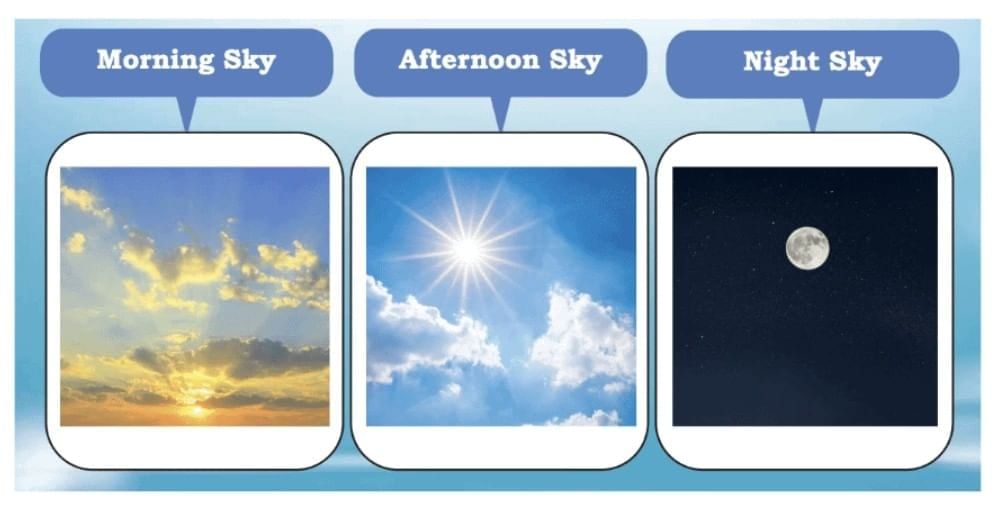Short Answer Questions: Our Sky | EVS for Class 4 (Our Wondrous World: New NCERT) PDF Download
Q1: How does the sky look in the morning, afternoon, and night?
Ans: In the morning, the sky is orange and bright; in the afternoon, it is blue and clear; and at night, it is dark with twinkling stars.

Q2: How does the Sun’s colour change during the day?
Ans: The Sun looks reddish in the morning and evening, but bright yellow at noon.
Q3: What is Poornima and what is Amavasya?
Ans: Poornima is the full Moon night when the Moon looks round, and Amavasya is the new Moon night when the Moon is not visible.
Q4: What happens during sunrise?
Ans: The sky turns orange and pink, birds chirp, animals wake up, and people start their day.
Q5: What happens during sunset?
Ans: The sky becomes red or purple, birds return to their nests, animals rest, and people relax at home.

Q6: How do shadows change from morning to evening?
Ans: In the morning, shadows are long towards the west; at noon, they are short; and in the evening, they are long towards the east.
Q7: How can you make a shadow bigger or smaller using a torch?
Ans: Moving the object closer to the light makes the shadow bigger, and moving it farther makes the shadow smaller.
Q8: Why do shadows change direction during the day?
Ans: Shadows change direction because the Sun appears to move from east to west in the sky.
Q9: What is a sundial and how does it work?
Ans: A sundial is a tool that tells time by using the shadow formed by the Sun.
Q10: Who built Jantar Mantar and what can be found there?
Ans: Raja Jai Singh built Jantar Mantar in several cities, and it has a large sundial called Samrat Yantra.

Q11: What are constellations?
Ans: Constellations are patterns made by stars in the night sky, like the Saptarshi.
Q12: Name three festivals related to the Moon and when they are celebrated.
Ans: Diwali is on the new Moon, Eid is on the first night after a new Moon, and Guru Poornima is on the full Moon.
Q13: What was India’s Chandrayaan mission about?
Ans: Chandrayaan was India’s mission to explore the Moon and study its surface.
Q14: What did the Vikram Lander achieve in 2023?
Ans: On 23 August 2023, the Vikram Lander landed on the Moon and collected data about its surface.

Q15: Why is studying the sky important?
Ans: Studying the sky helps us understand nature, track time, and celebrate important festivals.
|
21 videos|111 docs|10 tests
|
FAQs on Short Answer Questions: Our Sky - EVS for Class 4 (Our Wondrous World: New NCERT)
| 1. What is the main theme of "Our Sky Class 4"? |  |
| 2. How does "Our Sky Class 4" incorporate scientific concepts for young learners? |  |
| 3. Why is it important for children to learn about the sky and its elements? |  |
| 4. What activities are suggested in "Our Sky Class 4" to enhance learning? |  |
| 5. How can parents support their children in learning the concepts covered in "Our Sky Class 4"? |  |
















